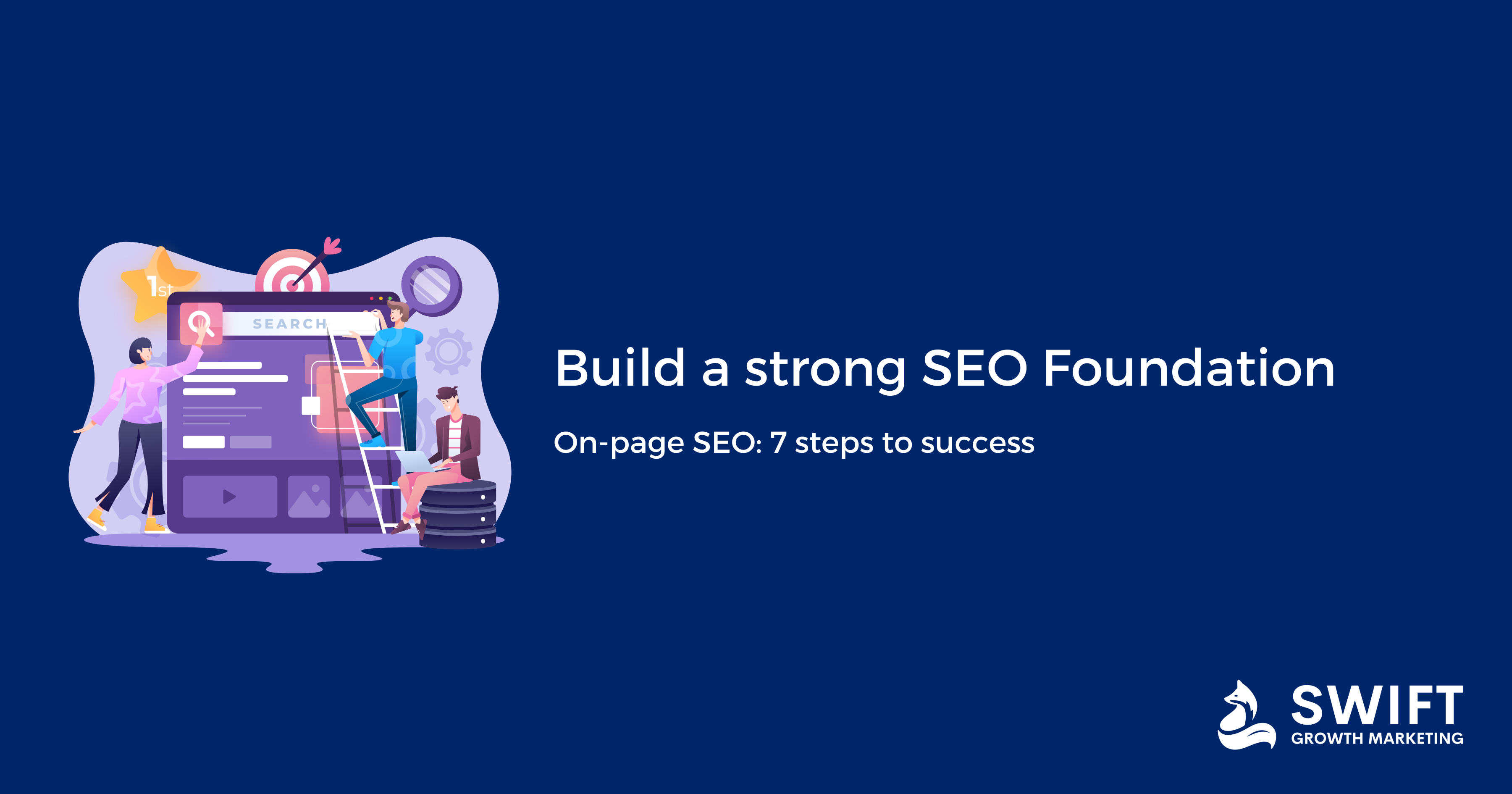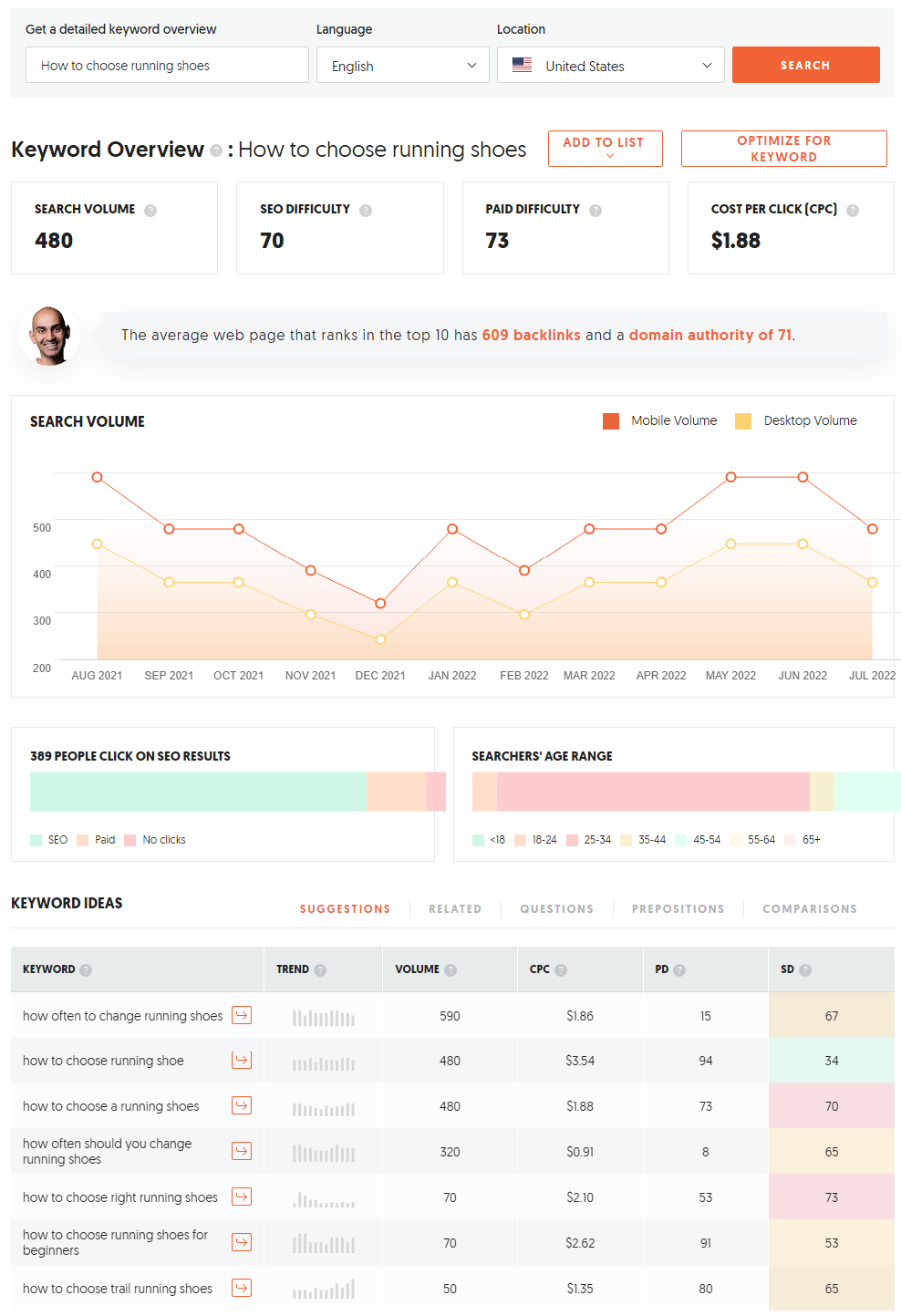
When it comes to search engine optimization (SEO), you must build a strong foundation. It’s not enough to just think about keywords and rank well—you also need to create a site that people will want to visit, read, and share. That’s where on-page SEO comes in: It’s the practice of optimizing your website so that search engines will know what your page is about (and what content you should include). To do this effectively, you must follow several steps for every page on your website. The benefit? Visitors are likelier to stick around for longer than if they landed on a site with poorly optimized pages.
Why having a strong on-page SEO foundation is important
While a lot goes into an effective SEO strategy, on-page SEO should be one of your priorities as you start implementing marketing strategies for your business.
On-page SEO is the cornerstone for all your other marketing efforts because it helps search engines analyze content on your website to identify relevant queries from users and rank them accordingly. By having strong foundations in place, you can optimize each part of the website more quickly and get it ranked higher on search engine results pages (SERPs).
If you don’t have a solid foundation, then it’s unlikely that any other aspects of your marketing strategy will work well or quickly enough to make a difference. Without strong foundations, potential customers won’t know how excellent or expensive your product or service might be—and they’ll find another brand instead.
Use a content-focused approach to on-page SEO
At the end of the day, SEO is about helping search engines deliver the best content to users. So your SEO strategy should always be content focused. If you’re building a new site or redesigning an existing one, consider what content your target audience will find valuable and deliver that to them. Focus on what your audience cares about (what they want) rather than trying to push material from other sources onto them.
Once you know what you want to write about, then it’s time to apply on-page SEO best practices. These page elements will help search engines understand what your content is about and how relevant it is for users.
Step 1: Start with keyword research
Keyword research is the first step in creating a strong SEO foundation. It involves brainstorming possible topics and keywords to include in your content, then using keyword research tools to narrow them down before you begin writing.
Keyword research helps you understand what people look for when searching online. By understanding their pain points, desires and questions, you can create content that addresses their needs—and rank higher on search engine results pages (SERPs).
To start, brainstorm a list of topics and keywords you want to target with your content. Ask yourself: What are my ideal customers interested in? What challenges do they face? How can I help them overcome these challenges? These questions will help you identify the information your potential customers are looking for—and provide insight into what they need to hear from you.
Once you have a list of keywords, use one or more keyword research tools to determine which ones are best for your needs. The tool will provide data on the competitiveness of a particular keyword and show you how many people search for it each month. It’s also helpful to look at the SERPs for your target keyword. What types of content appear in the top 10 results? What does Google consider relevant?

Example keyword research tool – source: ubersuggest.com
you can start to create a content strategy. As you review your keyword ideas, consider how difficult it will be to rank for each keyword. You can use the keyword tool to help identify easier keywords to rank for, which will allow you to achieve faster results with less time and effort.
Step 2: Create each page around one main keyword
Each page should focus on the main keyword, but it can also include sub-topics and related topics. For example, if your business sells shoes, you could have a website with an article titled “How to choose running shoes” that explains the different styles and types of running shoes available in your store. You could also have a landing page with tips on choosing running attire—including clothing and accessories like socks and wristbands—or even just information about how to dress for cold weather running conditions.
Always keep the user’s intent in mind when creating pages on your website. Make sure each page provides value by answering common questions about your industry or providing helpful advice for people looking to solve specific problems.
Step 3: Optimize each page’s title tag and meta description
Now that you have your pages set up, it’s time to optimize them. The first step is ensuring each page has a title tag and meta description—not just your homepage!
The title tag is one of the most important elements on a page because search engines use it to display your content in search results. It should be descriptive and relevant to what people are searching for so they know what they’ll get if they click through. If you don’t include it, Google will generate one for you based on the page’s content (which isn’t ideal).
The meta description is an introduction to your content on SERP listings; it gives users enough information about what your web page offers so that they’re compelled to click through when they want more information. If you don’t write one yourself or let Google do it for you (which happens if no meta description exists), Google will pull text from other places on the page or simply create its own generic sentences about how many words there are left until reaching maximum character length limitations imposed by their programmatic algorithms—which may not match up with the way people would describe your website at all!
Step 4: Use headings and an introductory paragraph to reinforce your keyword theme
You want to convey your message in a way that will be easy for your audience to digest, and it helps if you can do so with a single sentence or two. That’s why the first paragraph of most posts should be short, sweet, and right to the point.
That said, there are some specific strategies you can use when writing headings and introductory paragraphs that will help boost your SEO:
- Write one main header (known as an H1) per page with keywords related to your site’s overall theme
- Use subheadings throughout the content that break up longer sections into smaller chunks of text; each new section should have its own heading containing relevant keywords from previous sections as well as any new ones you need to highlight
- Use synonyms for important keywords throughout your content—this supports search engines’ understanding of what those words mean
If you want to optimize for Google answer boxes and position your page as the best source of information on a topic, you can include short answer paragraphs that may help increase the number of people who click through to your content.
Step 5: Give your page a short, memorable URL.
A URL is like an address for a website – it tells users where to find a particular page on the internet. For this reason, having a short, memorable URL relevant to the page’s content is important.
Using a short, descriptive URL is important for two main reasons: first, it’s easier for users to remember, and second, it’s better for search engine optimization (SEO). When it comes to SEO, a relevant URL is key – it helps search engines understand what your page is about and makes it more likely to appear in relevant search results.
There are a few best practices to keep in mind when it comes to creating a URL:
– Use keywords that accurately describe the content of the page
– Keep the URL short – aim for around 50-60 characters
– Use hyphens to separate words instead of spaces or underscores
– Avoid using special characters
following these best practices will help you create a user-friendly and SEO-friendly URL.
Step 6: Include the main keyword in image alt text (and other images, too).
It’s important to include the main keyword in image alt text for several reasons. First, search engines can index the image and understand what it’s about. Second, it gives users an idea of what the image is about if they can’t see it. Finally, it can help improve your website’s click-through rate if the image appears in search results.
Image tips:
- Including the main keyword in the image file name is also important. This helps search engines understand what the image is about and how it relates to the rest of the content on the page.
- It’s also important to ensure that your text near the image complements it. This helps users understand the context of the image and how it relates to the rest of the content.
- Adding image structured data can also help improve the image’s appearance in search results. This allows you to specify the title, description, and URL of the image, which can help improve the click-through rate.
- Finally, optimizing the image filesize for quicker load times is important for both users and search engines. Page load times are a ranking factor for SEO, so it’s important to ensure that images don’t slow down the page.
Step 7: Provide the user with value and encourage them to take action
Your ultimate goal is to get the user to take action. The best way to do this is by providing them with valuable content they want to read. You can also offer an incentive that encourages the reader to share your content on social media or even sign up for an email list. Doing so will help you reach your business goals and objectives in the long run, but it all starts with providing users with valuable information they can use today!
Remember: The purpose of the content is to give the user what they’re looking for. If you don’t provide that, then why should they take action or return to your website?
Conclusion
SEO is important for any website looking to rank highly in search engines and attract more traffic. However, a strong foundation of on-page SEO is essential for any website that wants to be successful. On-page SEO helps you attract more search engine traffic and increase engagement with your site. These tips will help you build a solid foundation for on-page SEO so that you can start improving your rankings today!

